How to Use a String Trimmer
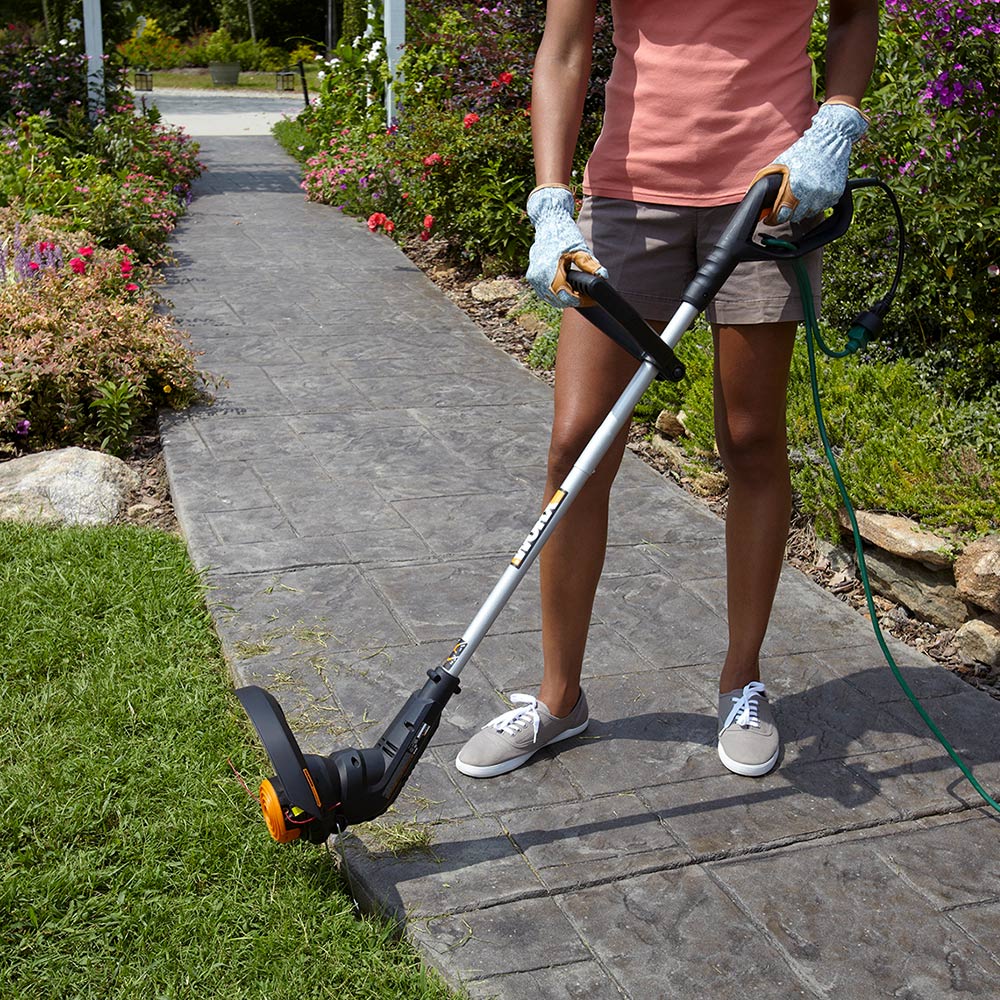
Last updated September 7, 2023
Perfect for hard-to-reach areas in your yard, string trimmers, also known as weed whackers, are often used at the end of the lawncare process. Because string trimmers are used to edge around trees, shrubs and walkways, they can get overworked and misused. This guide will teach you string trimmer tricks and tips as well as how to use a string trimmer like a pro, so your yard looks healthy and your trimmer lasts longer.
Difficulty:
Beginner
Duration:
Under 2 hours
Table of Contents
Determine Your Trimmer Type & Style
Begin to Edge or Taper
Clean Up Longer Grass and Weeds
Maintain Your String Trimmer
Determine Your Trimmer Type & Style
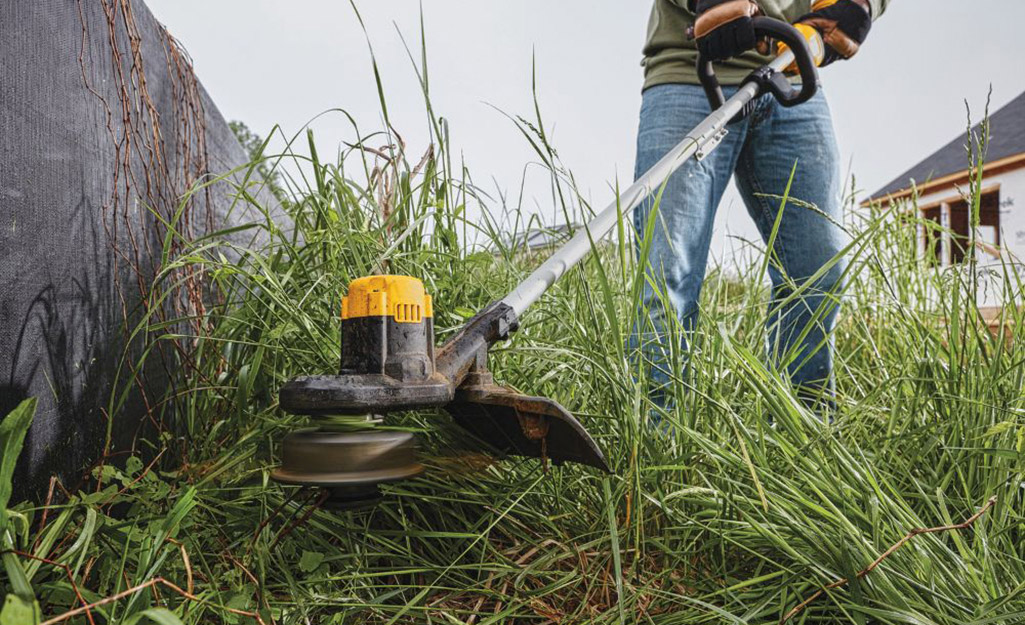
Tip: Always read the manufacturer's instructions before operating a string trimmer.
Before you get started trimming, you want to choose the string trimmer that's right for you. With so many options available, including electric, cordless and gas, it's important to determine what's best for your yard size and needs. For example, a larger yard with big trees would benefit more from a gas string trimmer, while a smaller yard that requires less maintenance would be well-kept with a cordless string trimmer that will need to be charged after every use.
Additionally, if you only need the tool for a short time, consider using The Home Depot tool rental service to rent a string trimmer.
You should also be aware of the style of string trimmer you need. Straight-shaft trimmers are great for reaching high branches and are easy to maneuver, curved-shaft trimmers work well around flowers beds.
For more information on types of string trimmers, check out our guide.
Begin to Edge or Taper
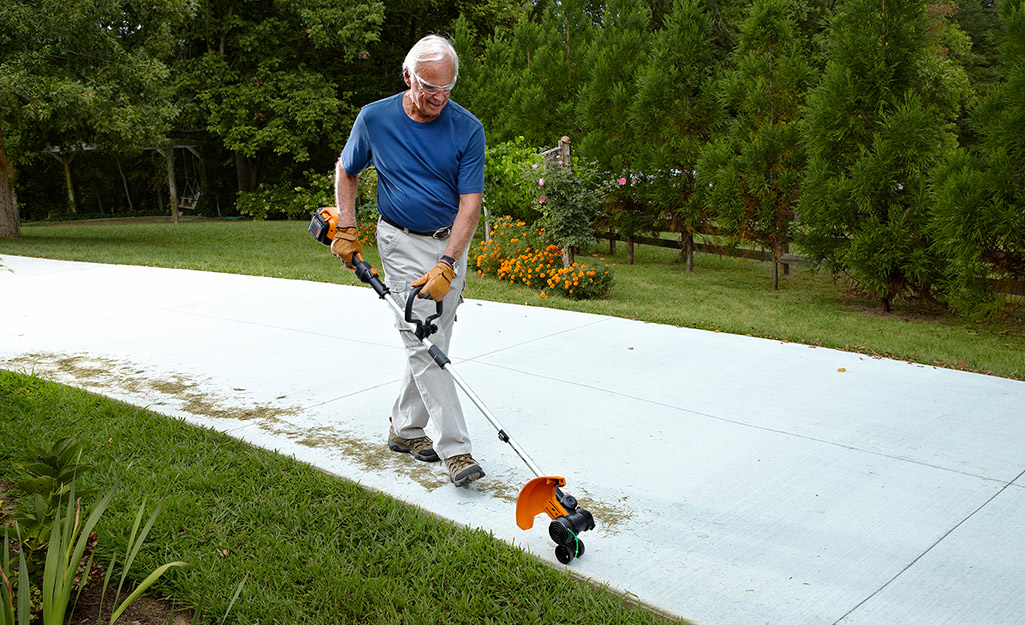
Tip: Always wear proper safety gear when operating lawn tools and clear any major obstructions such as debris and rocks out of the way.
Now that you have selected your trimmer, it's time to cut.
- Turn on the string trimmer, making sure to follow the instructions. Be careful not to hold the string trimmer directly over the lawn for the strings to cut the lawn. This will cause scalping and possible long-term lawn scarring and damage.
- When edging sidewalks and flower beds or along the driveway, keep the trimmer spool flat and parallel with the ground. You want the string to remain vertical, so choose your desired height and hold the trimmer upright as you walk a straight line, or cut a path.
- Tapering is a great tecnhnique for trimming along curbs, fences or trees.
- Grab your trimmer and hold it at a slight angle above the grass. You will hold it similiarly to how you would if you were edging, but the angle is important.
Clean Up Longer Grass and Weeds
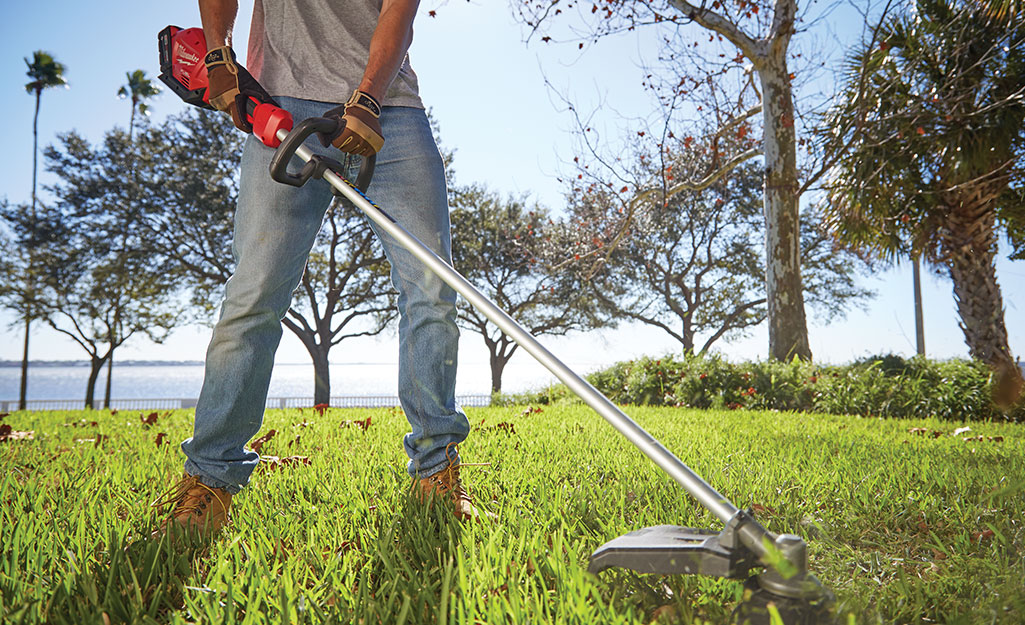
If you've edged your driveway and flower beds but need a way to tackle longer grass, weeds or clean up around obstructions, there are two techniques: scything and screeding can help. Here are two ways to use a string trimmer as a grass trimmer:
- To scythe in tall grass, choose a gas-powered string trimmer as it will have more power to cut through weeds and grass.
- Now, start up your trimmer, allowing it time to warm up.
- Next, take a long stance, holding the trimmer away from your body and begin moving it in a U-shape.
- Work the trimmer in and out of the cutting area in the U-shape until grass or weeds are at your desired level.
One of our favorite string trimmer tricks, screeding is ideal for weeds or grass that grows out of cracks in driveways or sidewalks.
- Once again, start up your trimmer, allowing it time to warm up.
- Then, tip the string trimmer so that the string is sitting just off the pavement and move it onto the weed's base.
Be sure you are flush with the hard surface. - Be extra cautious when using this technique: If you have too shallow of an angle, you will not have an effective cut. On the other hand, if you hold too high, you will create too sharp an angle and not cut evenly.
Maintain Your String Trimmer
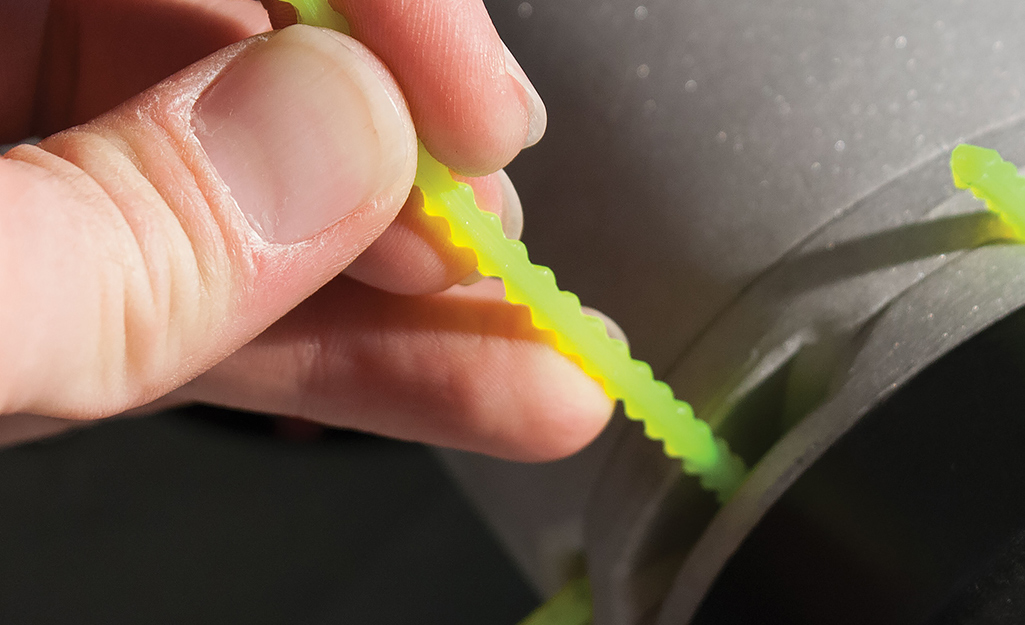
A healthy yard requires healthy tools. Always be sure your string trimmer is off. For gas-powered trimmers, be sure the spark plug is removed when making any repairs.
When your string trimmer line breaks or wears downs, it's time to replace it.
- To replace the string, begin by removing the spool from the trimmer's head. Then cut a new piece of string that's about 8-feet long.
- Next, feed one end of the string through the holes in the spool. Then tug to make sure the ends are even.
- Your spool should have an arrow printed on it to show you which direction to wind the string. Begin winding the string around the spool, following the arrow.
- Secure the ends of the string into the notches on the spool and reattach the spool to the trimmer.
- Take care to feed the ends of the string through the holes in the spinning head and tug on each string to release it from the notches.
If your trimmer has a self-winding head, simply feed the length of string through the spool and rotate the head to wind the string.
Any time you change the line, be sure to check the trimmer for damage and take some time to clean up the tool.
Need help identifying a tool or material? Find products fast with
image search
in The Home Depot app. Snap a picture of an item you like and we'll show you similar products.



























